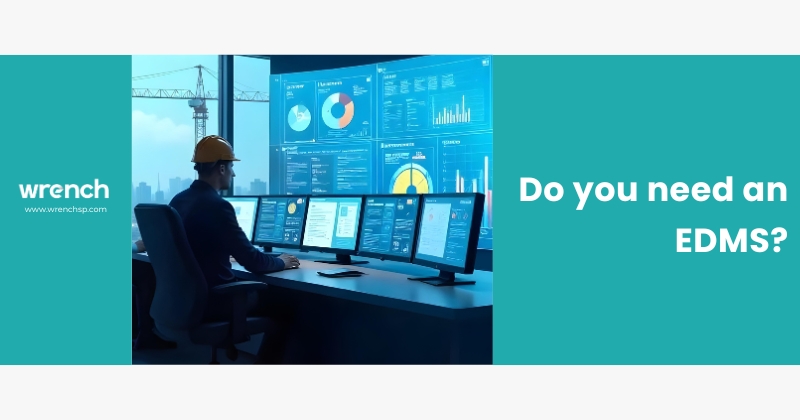The question many EPC organisations are asking themselves these days is: do I really need to invest in an EDMS if I already have a document management system? My answer: Yes.
An EDMS is a specialised tool for a specific purpose, namely, the managing of all the documents produced in an engineering and construction project.
EDMS is not just about storage, retrieval, and sharing, it streamlines the way project tasks get executed and impacts the project outcomes in direct and indirect ways. For example, an EDMS is designed for engineering documentation, like technical CAD drawings, various types of spreadsheets, PDFs, reports, memos, and all the other project-specific formats and document types that are generated during a project’s lifecycle. By contrast, a generic project management system may require significant customisation to make it suitable for all these types of documents. Also, with a generic document management system the bulk of the work still gets carried out by human managers who have to make sure the quality standards are met, the prescribed workflows are followed, and that information flows smoothly between document stakeholders, while with an EDMS the workflows and protocols and procedures will already have been built in and each step is driven forward by the system.
Next question: who makes the decision?
In past years it was the IT departments of the user organisations that decided what software was purchased and installed but with the advent of cloud-based computing the game is slowly changing and managers across disciplines are evaluating and assessing potential solutions directly. In response the market has also changed. Some EDMS developers offer free limited-time trials or even full-feature pilot implementations, others offer personalised demos with customer’s actual data, and still others offer online walkthroughs in real time. So it seems digital media and cloud-based business practices have allowed the EPC user to directly research and assess his EDMS of choice and find one that fits his needs, preferences, and budget in a way that makes decision-making around EDMS less risky.
That said, not every EPC organisation may actually need an EDMS. A small company that executes only one or two projects at a time may find their generic document management system sufficient for their needs and in that case EDMS might be a overkill or fall under the category of ‘technology for technology’s sake’.
There is also the financial aspect to be considered. For larger organisations the benefits of EDMS far outweigh its costs, including training and transition, but in other cases the disruptive effects, especially at first, can become a stumbling block. But for most organisations in today’s competitive market landscape it cannot be denied that EDMS is vastly beneficial, from project owners to consultants to contractors to designers, because every aspect of the business will be dramatically improved through the use of an EDMS.
Another factor influencing the decision to buy or not is that nowadays organisations are looking to digitise their business process from the bottom up just to keep up with competition. From their data management to their collaboration processes, they are hoping to solve problems like paper costs, delays, and the ever-increasing cost of manpower as well as the never-ending security concerns and the need to stay ahead of competition and for such companies EDMS is the logical next step in the digital transformation journey. It centralizes information and connects information-generating groups in the cloud and creates a digital work environment across all data stakeholders, which has the side-effect of enforcing quality by virtue of switching to a digitally-driven or automated system, and that means the rate of delays and errors and rework also drops.
Security is another pain point that responds well to EDMS. For companies wanting to improve their document security system ie how they protect their data and how they safeguard access to sensitive information an EDMS is the best solution as it shows tangible results and is well-accepted by most users across all levels of the organisation.
EDMS will also help companies looking to digitise their historical data, that is, convert their past project hard copies into soft copies, which has the benefit of saving paper and storage costs and simultaneously creates a knowledge archive that can be utilised by authorised personnel. Most EPC organisations would welcome a system that helps them transmit the right information to the right people at the right time; which is something EDMS can do if properly set up and customized at the time of implementation and by streamlining the way teams handle their day to day tasks and build up team morale, productivity is improved in the long run. Whereas for managers, an EDMS translates to better insights and visibility into how project work is progressing.
Bottom line: if you’re an organisation facing rapid growth, looking to dramatically improve the way your engineering documentation is managed, and willing to invest some time and effort into the transition, EDMS is for you.
